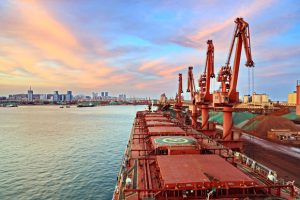Trade tensions persist, but China still needs Australian iron ore
A year ago, China fired the first salvo across Australia’s bow by amending iron ore screening provisions.
This was perceived by the rest of the world as Beijing targeting Australian iron ore supply because of the latter’s support for a probe of the origins of the COVID-19 pandemic.
So, now is a good time to analyze how things stand on the iron ore supply situation.
In fact, not just iron ore supply, but the frosty relationship between the two countries has also affected commodities trade in things like coal and barley, to name a couple.
Each month, MetalMiner hosts a webinar on a specific metals topic. Explore the upcoming webinars and sign up for each on the MetalMiner Events page.
China-Australia tensions and iron ore
In May this year, China suspended economic dialogue with Australia. The Australian government, led by Prime Minister Scott Morrison, is not budging yet. However, China continues to be Australia’s biggest trading partner.
What has irked the Chinese even more is the Morrison government’s increasing closeness to some of the Western powers, particularly the United States. a move that the Chinese have called,“a Cold War” mindset, the AP reported.
So where does all this leave the global iron ore supply?
Also, can the Chinese really ignore supply from Australia?
Political experts within Australia seem to be divided on whether or not to succumb to the Chinese pressure and offer some concessions in order to appease it. On the iron ore front, sector experts around the globe seem near-unanimous that China, for the short-term, has no choice but to “swallow its pride” and continue its reliance on the Aussies for their iron ore (a critical component in the steelmaking process).
No alternatives
There is no alternative to Australian iron ore where China is concerned. China accounts for over 70% of global iron ore trade. Furthermore, two-thirds of its imports currently come from Australia.
Trade figures show that in the first five months of 2021, 69.3% of total Chinese iron ore imports came from Australia. Following Australia, Brazil occupied the No. 2 spot at 17.7% of total imports.
That gap tells part of the story.
In the short term, Beijing will find it more difficult to find alternate suppliers of iron ore. Because of certain constraints in the Brazilian supply, such as the present pandemic, China has no choice but to be dependent on Australia for its iron ore.
In the long term, China has plans to ensure self-reliance for iron ore supply. That is well documented in its present five-year plan ending in 2025. The country is sitting on the largest iron ore deposit (albeit of inferior quality as compared to Australian ore).
But it clearly wants to boost its domestic iron ore production. As such, China is investing in new mines. The goal is to become at least 50% self-sufficient in ore supply by 2025. It seeks to cut its imports in half by 2030.
In addition to new mines, the five-year plan envisages increasing the ratio of recycled scrap steel in the production of crude steel in China. Currently, it is about 22%. The plan aims to raise the ratio to 30% by 2025.
The Australian perspective
So where does all this leave Australia?
The country can very well take the line now that it needs to diversify its iron ore exports, which reached about 600 million tons in 2020. This is particularly true as China’s ore imports will eventually come down.
Within Australia, the “pro-Chinese” lobby wants the Morrison government to stop its “anti-China” policy and work toward an amicable solution. This group argues that when China forever reduces its ore imports — and maybe other commodities too — it could damage the Australian economy.
This lobby also feels that as Beijing and Washington target each other, Canberra has becoming an target between the two warring foes. Australia’s economic interests should not be sacrificed in that war, the lobby argues.
The MetalMiner Best Practice Library offers a wealth of knowledge and tips to help buyers stay on top of metals markets and buying strategies.



Leave a Reply